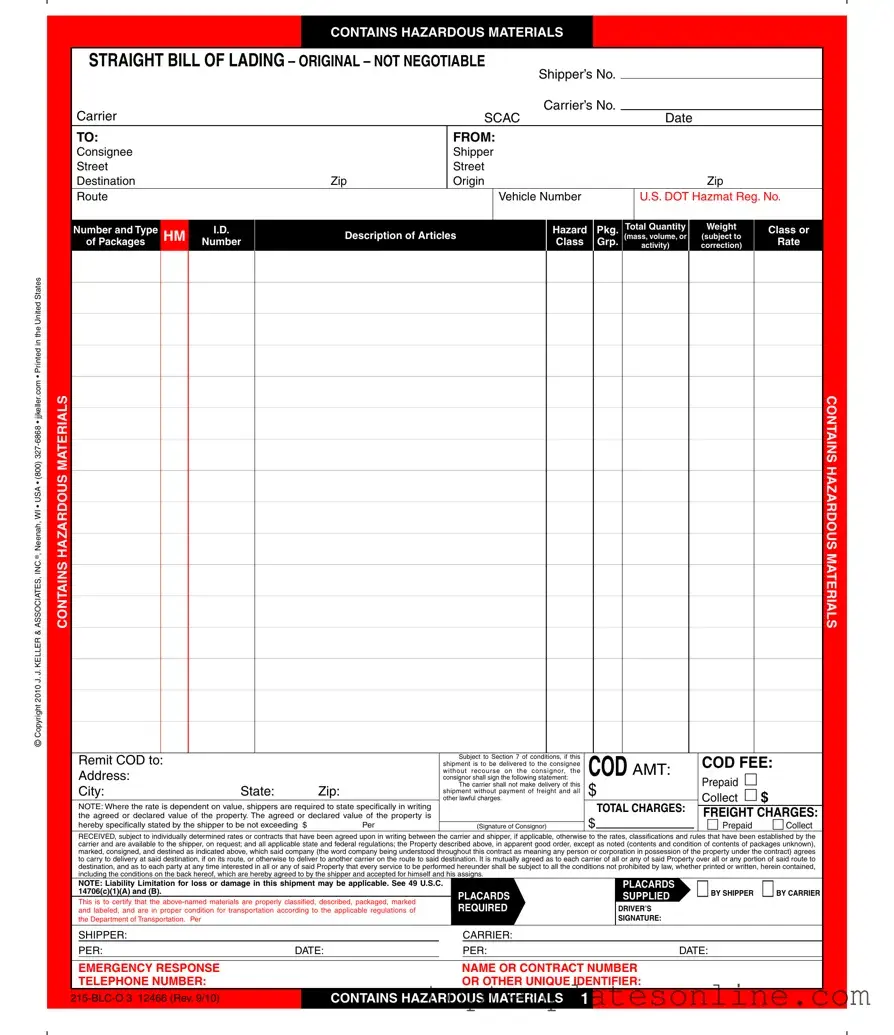The Hazard Bill of Lading is an essential document used in the transportation of hazardous materials, ensuring compliance with safety regulations and facilitating the smooth movement of goods. This form contains vital information about the shipment, including details about the shipper, consignee, and carrier, as well as specific descriptions of the hazardous materials being transported. Each entry, from the U.S. DOT Hazmat Registration Number to the total quantity and weight of the packages, plays a crucial role in ensuring that all parties involved are aware of the potential risks associated with the shipment. The form also outlines payment responsibilities, including options for prepaid or collect freight charges, and provides a clear framework for addressing claims related to loss or damage. Additionally, it emphasizes the importance of proper classification and labeling of hazardous materials, which is critical for safety during transit. Overall, the Hazard Bill of Lading serves as a comprehensive guide that protects both the shipper and carrier while adhering to federal and state regulations.
